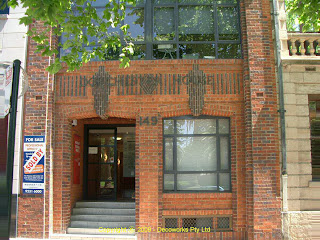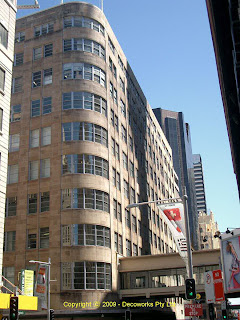Bank of China

Although a long way from Sydney I thought I would include this building in China. The Bank of China building in Shanghai in the French Concession area is a great example of Art Deco styling adapted for use on a modern building. The imaginative blending of modern glass and building materials with classic Art Deco styling has been achieved with great success. The soaring vertical lines give the building a monumental feel while the detail in the facade and lamps is straight out of the 1930s. Facade detail More facade detail The light fixtures are wonderful examples of modern interpretations of style of the 1930's.





